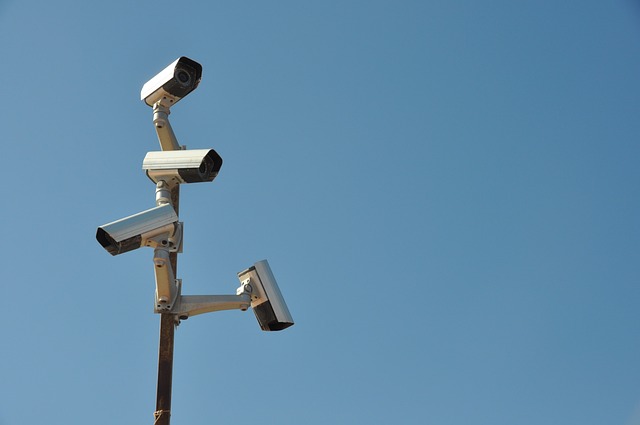Smart Security integration is vital for modern home automation, providing a layered defense against both physical and cyber threats. This includes the installation of smart sensors like door/window sensors and motion detectors, alongside high-definition IP cameras with night vision capabilities. These devices are designed to work in harmony within a connected home ecosystem, offering real-time alerts, remote monitoring, and comprehensive surveillance through facial recognition and motion tracking. Advanced security features such as two-factor authentication enhance cybersecurity, while regular software updates ensure the system remains protected against new security threats. Investing in cutting-edge security systems not only fortifies your home but also streamlines everyday tasks, making the home automation setup more responsive and intelligent to individual lifestyle needs. The combination of these technologies within a connected home framework creates an adaptable and robust security network that offers both peace of mind and practical convenience for homeowners.
In an era where technology seamlessly integrates into our daily lives, smart security has become a cornerstone of modern home automation. This article delves into the essentials of setting up a robust and intelligent security system that not only protects your property but also enhances your connected home ecosystem. We’ll explore the integration of advanced security systems, the role of smart sensors and cameras in home monitoring, and best practices for a comprehensive deployment. Furthermore, we’ll discuss how to future-proof your setup for advanced protection, ensuring your home remains secure against evolving threats. Join us as we navigate the intersection of convenience and safety in the realm of smart security.
- Laying the Groundwork for Smart Security in Your Home Automation Setup
- Integrating Advanced Security Systems into Your Connected Home Ecosystem
- Enhancing Home Monitoring with Smart Sensors and Cameras
- Best Practices for a Comprehensive Smart Security Deployment
- Future-Proofing Your Smart Security: Expanding Beyond the Basics for Advanced Protection
Laying the Groundwork for Smart Security in Your Home Automation Setup

As home automation continues to advance, integrating smart security into your connected home setup is not just a luxury but a prudent step towards safeguarding your living space. To lay the groundwork for smart security within your home automation system, begin by assessing your home’s vulnerabilities and identifying areas that require enhanced protection. Smart sensors, such as door/window sensors, motion detectors, and environmental hazard sensors, are the cornerstone of a robust security strategy. These devices communicate with your central smart hub, allowing for real-time monitoring and alerts directly to your smartphone or tablet, ensuring you’re always informed of your home’s status.
Once the foundational sensors are in place, expand your setup by incorporating advanced security features like IP cameras with night vision capabilities, smart door locks, and automated lighting systems. These elements not only add layers of protection but also integrate seamlessly with your existing home automation ecosystem. For instance, smart lights can be programmed to turn on automatically when motion is detected, creating the illusion of occupancy and deterring potential intruders. By leveraging the interconnectivity of smart devices within a unified platform, you can establish a comprehensive security network that not only protects your home but also enhances your daily convenience and peace of mind.
Integrating Advanced Security Systems into Your Connected Home Ecosystem

In today’s interconnected world, integrating advanced security systems into your connected home ecosystem is a prudent step towards safeguarding your residence and ensuring peace of mind. Smart Security devices have become integral to Home Automation setups, providing real-time monitoring and alerts that are both responsive and adaptable to your daily routines. By leveraging smart sensors placed strategically throughout your home, you can monitor for unauthorized access, detect environmental hazards such as smoke or water leaks, and even track the presence of valued family members or pets. These devices communicate seamlessly with a central hub, which can be accessed remotely via a smartphone app or web interface, allowing for a proactive approach to security that is informed by data and enhanced by user-defined automation rules.
Furthermore, advanced security systems go beyond the basic functions of traditional alarms. They offer sophisticated features like facial recognition, AI-driven analytics, and automated arming and disarming routines that align with your lifestyle. The integration of these technologies within a connected home ecosystem not only bolsters your home’s defenses but also streamlines daily operations, ensuring that your Home Automation system is more than just a collection of gadgets—it’s a cohesive, intelligent network designed to protect and serve your household’s needs. With the advent of smart monitoring solutions, your home can become a fortress of the future, equipped with sensors and devices that work in harmony to provide a comprehensive layer of protection against both physical and digital threats.
Enhancing Home Monitoring with Smart Sensors and Cameras

Integrating smart sensors and cameras into your home security setup can significantly enhance your monitoring capabilities. With advanced security features, these devices offer a more proactive approach to safeguarding your residence. Home automation technology allows for seamless integration with existing smart home ecosystems, enabling real-time alerts and remote monitoring directly from your smartphone or tablet. Smart sensors can detect unusual activity such as breaking glass, water leaks, or unexpected entry, triggering immediate notifications. This level of connected home security ensures that you are always aware of your home’s safety, regardless of your physical location, providing peace of mind for homeowners and renters alike.
Moreover, the addition of high-definition cameras with night vision capabilities broadens the scope of smart monitoring. These devices can differentiate between people, animals, and vehicles, reducing false alarms while ensuring that any real incidents are captured in clear detail. By leveraging security systems with intelligent features like facial recognition and motion tracking, homeowners can tailor their monitoring to focus on specific areas or potentially unwanted visitors. This sophisticated level of smart security elevates the concept of a secure home environment, making it an essential component for any modern home automation system.
Best Practices for a Comprehensive Smart Security Deployment

Integrating advanced security into a modern home automation system requires careful planning and execution to ensure a comprehensive smart security deployment. A robust setup begins with selecting reliable smart security devices that can communicate effectively with one another. These devices should be from reputable brands known for their performance in the connected home ecosystem, ensuring seamless integration and advanced security monitoring capabilities. It’s crucial to consider the placement of home sensors such as door/window sensors, motion detectors, and cameras at strategic locations to provide comprehensive coverage without overstepping privacy boundaries. Additionally, setting up secure network connections for these devices is paramount; this includes employing strong encryption protocols and unique, complex passwords to prevent unauthorized access.
Once the initial setup is complete, regular maintenance and software updates are essential to maintain the efficiency and security of your smart security system. Keeping the firmware of all devices up-to-date helps protect against new vulnerabilities and ensures that the home sensors and cameras operate at peak performance. Moreover, configuring these systems with two-factor authentication where possible enhances protection against cyber threats, as it adds an additional layer of security beyond just a password. In doing so, homeowners can enjoy the peace of mind that comes with a well-implemented smart security system within their connected home environment.
Future-Proofing Your Smart Security: Expanding Beyond the Basics for Advanced Protection

In the realm of home automation, incorporating smart security devices is a pivotal step towards fortifying your living space against potential threats. As one delves into the connected home ecosystem, it becomes imperative to transcend the fundamentals of smart monitoring by integrating advanced security measures. This entails not only installing state-of-the-art security systems but also ensuring that these devices are compatible with future technologies and standards. By doing so, homeowners can safeguard their residences against evolving security challenges, as well as leverage home sensors that provide real-time alerts and detailed analytics for proactive threat detection.
Advanced security solutions go beyond the mere presence of cameras and motion detectors; they involve a network of devices that work in unison to deliver comprehensive protection. For instance, smart locks with robust encryption and AI-driven video doorbells can recognize familiar faces or package deliveries, while smart window sensors can detect forced entry attempts. These sophisticated systems often come equipped with remote access capabilities, allowing homeowners to monitor their property from anywhere in the world, thus ensuring that their smart security setup not only aligns with current needs but also adapts to future advancements in connected home technology.
In conclusion, smart security represents a pivotal advancement in home automation, offering a layered approach to safeguarding your living space. By integrating advanced security systems within your connected home ecosystem, you elevate your home monitoring capabilities far beyond traditional measures. Smart sensors and cameras provide real-time insights into your home’s environment, allowing for proactive rather than reactive security. Adhering to best practices ensures a robust deployment of these systems. As technology evolves, future-proofing your smart security setup with advanced protection options will remain paramount for maintaining the safety and integrity of your home automation network. Embracing these innovations positions you at the forefront of modern security, delivering peace of mind alongside the convenience and efficiency that characterize a truly connected home environment.
